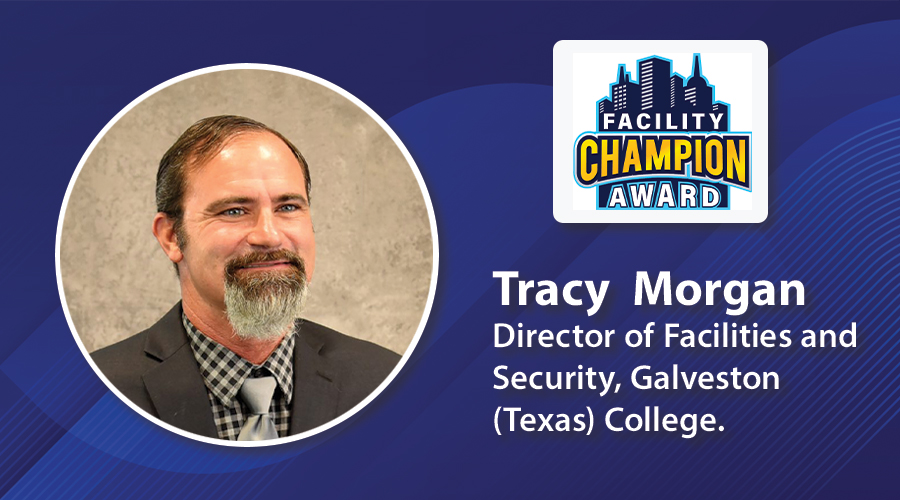Hazardous Materials: Risky Business, Safe Solutions
A strategy that identifies and manages hazardous waste and materials properly can create a safer environment in facilities
Any organization’s efforts to make its facilities more environmentally friendly must include a comprehensive program to properly manage, store and dispose of hazardous materials. Hazardous and toxic substances are defined as workplace chemicals that can cause harm. Under this definition, the term chemicals includes dusts, mixtures, and common materials, such as paints, fuels, and solvents.
These materials come in many forms, from schools’ cleaning chemicals and paints to hospitals’ chemicals and medical waste. Maintenance and engineering managers should be aware of current regulatory and enforcement trends related to these materials so workers handle these materials properly to ensure safety and regulatory compliance.
Minimizing hazardous materials and wastes also can demonstrate a manager’s attention to the organization’s bottom line. So managers should consider tracking the direct and indirect benefits associated with a sound hazardous material and waste program and presenting these benefits to upper management as a way of gaining both ongoing support and recognition for the department.
Identifying and Defining Hazards
According to the U.S. Environmental Protection Agency (EPA), a waste is any solid, liquid or contained gaseous material discarded by being disposed of, burned or incinerated, or recycled. Managers must be able to properly identify and segregate each waste stream so their volumes can be minimized and properly managed. Common waste streams include:
Hazardous wastes. These wastes are listed under the Resource Conservation and Recovery Act (RCRA) regulations — listed wastes — or they exhibit one of the four defined characteristics of hazardous waste: ignitability, corrosivity, reactivity, or toxicity.
Universal wastes. EPA regulations streamline the standards for hazardous waste management for federally designated universal wastes. This category of wastes includes batteries, pesticides, lamps, and mercury-containing equipment. The EPA regulations govern the collection and management of these widely generated wastes, facilitating environmentally sound collection and proper recycling or treatment.
Medical wastes. This category of waste includes solid waste generated in the diagnosis, treatment or immunization of humans or animals. Medical wastes generally fall into one of four categories: infectious, hazardous, radioactive, and general wastes from health care and medical facilities. Most medical waste is similar to wastes generated in households and offices each day. Infectious, hazardous, and radioactive wastes represent only a small portion of medical waste generated each year, but they garner the greatest amount of concern in organizations.
Infectious and biohazardous wastes. Biohazardous waste is contaminated with potentially infectious agents or tissues. This category includes but is not limited to blood-soaked bandages, culture dishes and other glassware, discarded surgical gloves and instruments, and needles. Regulatory definitions and management requirements for medical waste vary by state and might include more waste streams than the federal definition. The Occupational Safety and Health Administration (OSHA) requires employees exposed to blood or other potentially infectious materials to establish and implement a written exposure-control plan designed to eliminate or minimize employee exposure to bloodborne pathogens.
Managing the Hazard
Many organizations realize it makes much more sense to reduce waste and pollution at the point of generation — before it goes into the Dumpster, down the sewer, out the stack, or away with the hauler. If organizations don’t generate waste or pollution, they don’t have to track it, get permits, incur expensive disposal or treatment, or purchase increased insurance against the risks that might be associated with it.
A facility that generates hazardous waste can minimize these materials by:
• setting explicit goals for reducing the volume and toxicity of waste
• conducting periodic assessments to minimize waste
• substituting non-hazardous materials in place of hazardous ones.
The first step in properly managing chemicals used in departments and during maintenance activities is to generate a list of chemicals purchased by the department. Technicians should perform a walk-through of each department and focus on storage areas, tool kits and carts. Once the inventory is complete, the next step is to obtain and review material safety data sheets (MSDS) to determine if any of the chemicals are hazardous.
Technicians should review the hazardous chemicals to determine if:
• labels clearly identify original product names, or full chemical names, and hazards
• containers of non-hazardous substances, such as water, are labeled explicitly to avoid confusion
• incompatible chemicals, including solids, are segregated based on U.S. Department of Transportation hazard classes
• all segregated chemicals — liquids — are kept in secondary containment
• any hazardous materials are stored next to or above sinks
• all chemical containers capped and sealed, except when actively adding or removing materials from them
• flammable liquids, including flammable liquid wastes, are stored outside of a storage cabinet if in excess of 5-10 gallons
• employees have completed hazard communication training.
Getting Support
Many direct and indirect benefits arise from properly managing hazardous materials and wastes. These benefits go far beyond the maintenance and engineering department.
To gain the initial support for a management program or to demonstrate how its activities fit into the organization’s overall environmental goals, managers must understand the benefits of greening an organization or a department.
One benefit is cost reduction through properly identifying and segregating wastes. Managers should track wastes that are eliminated or reclassified by their programs. An example involves infectious waste.
Many hospitals routinely throw 50-70 percent of their waste into the biohazardous waste stream, although a large portion of hospital waste is similar to that of a hotel or office building, and they often pay up to 10 times as much to dispose of infectious versus solid waste. Case studies prove that with comprehensive education, hospitals realistically can aim to decrease so-called red bag waste to a mere 6-10 percent of the waste stream. In fact, the Centers for Disease Control and Prevention suggests that only 2-3 percent of hospital waste truly requires disposal as infectious waste.
Additional benefits involve improved worker health and safety compliance. Using non-toxic cleaners and low-emission building products greatly improves building occupant health, minimizes sick days, and improves job satisfaction.
Eliminating toxic substances also reduces the regulatory burden placed on managers that cover exposure monitoring, training, protective equipment, and emergency response. These and other benefits provide value to managers, their staff, other building occupants, and the organization.
Jeffery C. Camplin, CSP, CPEA — mundycamp@aol.com — is president of Camplin Environmental Services Inc. in Rosemont, Ill. He is also the administrator of the American Society of Safety Engineers’ Environmental Practice Specialty.
Hazmat Resources
Managers cannot recognize all of the dangers associated with hazardous materials used in their departments. But the internet offers a wealth of information that will help identify hazardous chemicals and materials in the workplace.
For example, the Occupational Safety and Health Administration (OSHA) offers a chemical sampling file available on its web site — www.osha.gov — that contains listings for about 1,500 substances. The Toxic Substance Control Act (TSCA) Chemical Substances Inventory on the U.S. Environmental Protection Agency (EPA) web site — www.epa.gov — lists information on more than 62,000 chemicals or chemical substances. And online libraries maintain files of material safety data sheets (MSDS) for more than 100,000 substances.
To begin the process, managers can schedule a hazardous chemical inventory by area, department or operation. OSHA requires facilities to maintain MSDS on all hazardous substances employees use. An inventory offers a good opportunity to make sure MSDS sheets are available and appropriately filed for each chemical identified.
Finally, OSHA and EPA maintain an occupational chemical database — www.osha.gov/web/dep/chemicaldata/#target — they jointly developed as a convenient reference. This database compiles information from several government agencies and organizations.
— Jeffery C. Camplin
|
Regulatory Perspective
The U.S. Environmental Protection Agency (EPA) has identified three areas in which managers can expect hazardous material and waste regulations to impact their facilities:
• Reducing the volume of waste generated
• Preventing exposures to humans and the ecosystem from hazardous chemicals
• Managing wastes and clean-up chemical releases in a safe, environmentally sound manner.
Regulators are emphasizing the reduction in the volume of waste generated by an organization. This emphasis is demonstrated by the EPA’s reclassification of certain hazardous wastes as universal and by promoting waste-reduction and recycling.
The Occupational Safety and Health Administration (OSHA) estimates that more than 32 million workers are exposed to 650,000 hazardous chemical products in more than 3 million workplaces. This situation poses a serious problem for exposed employers and their employees. OSHA now regulates exposure to about 400 substances. OSHA also has a Hazard Communication standard designed to ensure that information about chemical hazards and associated protective measures is disseminated to employees.
All employers with hazardous chemicals in their workplaces must prepare and implement a written hazard-communication program. They also must ensure that all containers have label, employees have access to material safety data sheets (MSDS), and all potentially exposed employees take an effective training program.
The basic goal of an effective hazard-communication program is to ensure employers and employees know the identities and hazards of chemicals in their workplaces. When employers and employees have such information, they can use it to design and implement appropriate protective measures to reduce accidents and injuries.
— Jeffery C. Camplin
|
Related Topics:











